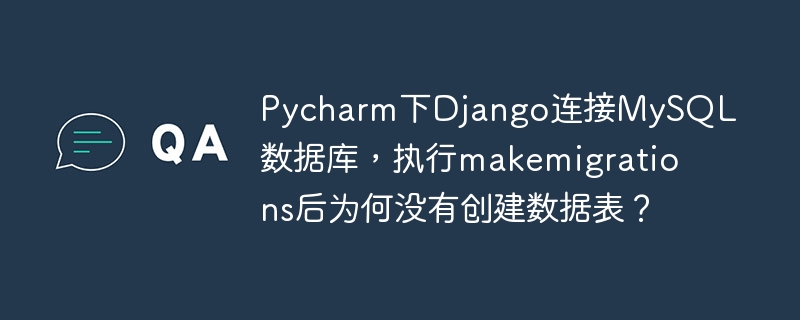mysql行級鎖實現原理:1、InnoDB行鎖是通過給索引項加鎖來實現的,這一點mysql和 oracle不同;2、InnoDB這種行級鎖決定,只有通過索引條件來檢索數據,才能使用行級鎖,否則, 直接使用表級鎖。

mysql行級鎖實現原理:
鎖是在執行多線程時用于強行限定資源訪問的同步機制,數據庫鎖根據鎖的粒度可分為行級鎖, 表級鎖和頁級鎖
行級鎖
行級鎖是mysql中粒度最細的一種鎖機制,表示只對當前所操作的行進行加鎖,行級鎖發生沖突 的概率很低,其粒度最小,但是加鎖的代價最大。行級鎖分為共享鎖和排他鎖。
特點:
開銷大,加鎖慢,會出現死鎖;鎖定粒度最小,發生鎖沖突的概率最大,并發性也高;
實現原理:
InnoDB行鎖是通過給索引項加鎖來實現的,這一點mysql和oracle不同,后者是通過在數據庫中 對相應的數據行加鎖來實現的,InnoDB這種行級鎖決定,只有通過索引條件來檢索數據,才能使用行 級鎖,否則,直接使用表級鎖。
特別注意: 使用行級鎖一定要使用索引
舉個栗子:
創建表結構
CREATE TABLE `developerinfo` ( `userID` bigint(20) NOT NULL, `name` varchar(255) DEFAULT NULL, `passWord` varchar(255) DEFAULT NULL, PRIMARY KEY (`userID`), KEY `PASSWORD_INDEX` (`passWord`) USING BTREE ) ENGINE=InnoDB DEFAULT CHARSET=utf8;
插入數據
INSERT INTO `developerinfo` VALUES ('1', 'liujie', '123456'); INSERT INTO `developerinfo` VALUES ('2', 'yitong', '123'); INSERT INTO `developerinfo` VALUES ('3', 'tong', '123456');
(1)通過主鍵索引來查詢數據庫使用行鎖
打開三個命令行窗口進行測試
| 命令行窗口1 | 命令行窗口2 | 命令行窗口3 |
| mysql> set autocommit = 0; Query OK, 0 rows affected mysql> select * from developerinfo where userid = ‘1’ for update; +——– +——–+———-+ | userID | name ? | passWord | +——–+——– +———-+ | ? ? ?1 | liujie | 123456 ? | +——– +——–+———-+ 1 row in set |
mysql> set autocommit = 0; Query OK, 0 rows affected mysql> select * from developerinfo where userid = ‘1’ for update; 等待 |
mysql> set autocommit = 0; Query OK, 0 rows affected mysql> select * from developerinfo where userid = ‘3’ for update; +——–+——+———-+ | userID | name | passWord | +——– +——+———-+ | ? ? ?3 | tong | 123456 ? | +——– +——+———-+ 1 row in set |
| mysql> commit; Query OK, 0 rows affected |
mysql> select * from developerinfo where userid = ‘1’ for update; +——–+——– +———-+ | userID | name ? | passWord | +——–+——– +———-+ | ? ? ?1 | liujie | 123456 ? | +——– +——–+———-+ 1 row in set |
? |
(2)查詢非索引的字段來查詢數據庫使用行鎖
打開兩個命令行窗口進行測試
| 命令行窗口1 | 命令行窗口2 |
| mysql> set autocommit=0; Query OK, 0 rows affected mysql> select * from developerinfo where name = ‘liujie’ for update; +——– +——–+———-+ | userID | name ? | passWord | +——–+——– +———-+ | ? ? ?1 | liujie | 123456 ? | +——– +——–+———-+ 1 row in set |
mysql> set autocommit=0; Query OK, 0 rows affected mysql> select * from developerinfo where name = ‘tong’ for update; 等待 |
| mysql> commit; Query OK, 0 rows affected |
mysql> select * from developerinfo where name = ‘liujie’ for update; +——–+——–+———-+ | userID | name ? | passWord | +——–+——–+———-+ | ? ? ?1 | liujie | 123456 ? | +——–+——–+———-+ 1 row in set |
(3)查詢非唯一索引字段來查詢數據庫使用行鎖鎖住多行
mysql的行鎖是針對索引假的鎖,不是針對記錄,所以可能會出現鎖住不同記錄的場景
打開三個命令行窗口進行測試
| 命令行窗口1 | 命令行窗口2 | 命令行窗口3 |
| mysql> set autocommit=0; Query OK, 0 rows affected mysql> select * from developerinfo where password = ‘123456 ‘ for update; +——–+——–+———-+ | userID | name ? | passWord | +——– +——–+———-+ | ? ? ?1 | liujie | 123456 ? | | ? ? ?3 | tong ? | 123456 ? | +——–+——–+———- + 2 rows in set |
mysql> set autocommit =0 ; Query OK, 0 rows affected mysql>?select * from developerinfo where userid = ‘1’ for update; 等待 |
mysql> set autocommit = 0; Query OK, 0 rows affected mysql> select * from developerinfo where userid = ‘2 ‘ for update; +——–+——–+———-+ | userID | name ? | passWord | +——–+——–+———-+ | ? ? ?2 | yitong | 123 ? ? ?| +——–+——–+———-+ 1 row in set |
| commit; | mysql> select * from developerinfo where userid = ‘1’ for update; +——–+——–+———-+ | userID | name ? | passWord | +——–+——–+———-+ | ? ? ?1 | liujie | 123456 ? | +——–+——–+———-+ 1 row in set |
(4)條件中使用索引來操作檢索數據庫時,是否使用索引還需有mysql通過判斷不同執行計劃來 決定,是否使用該索引,如需判定如何使用explain來判斷索引,請聽下回分解
更多相關免費學習推薦:mysql教程(視頻)

















